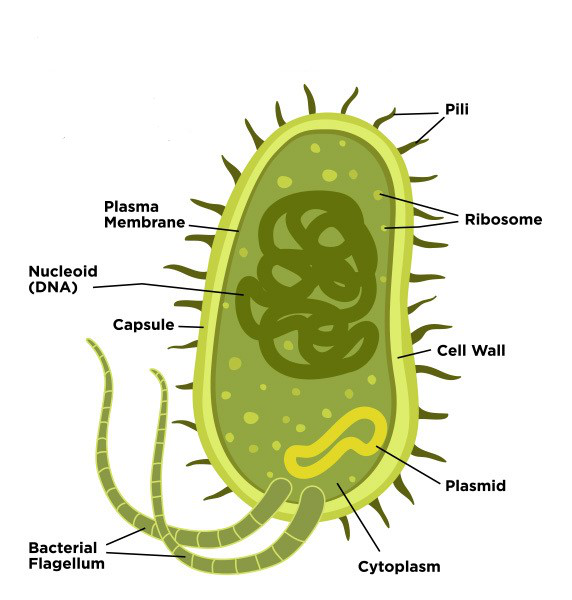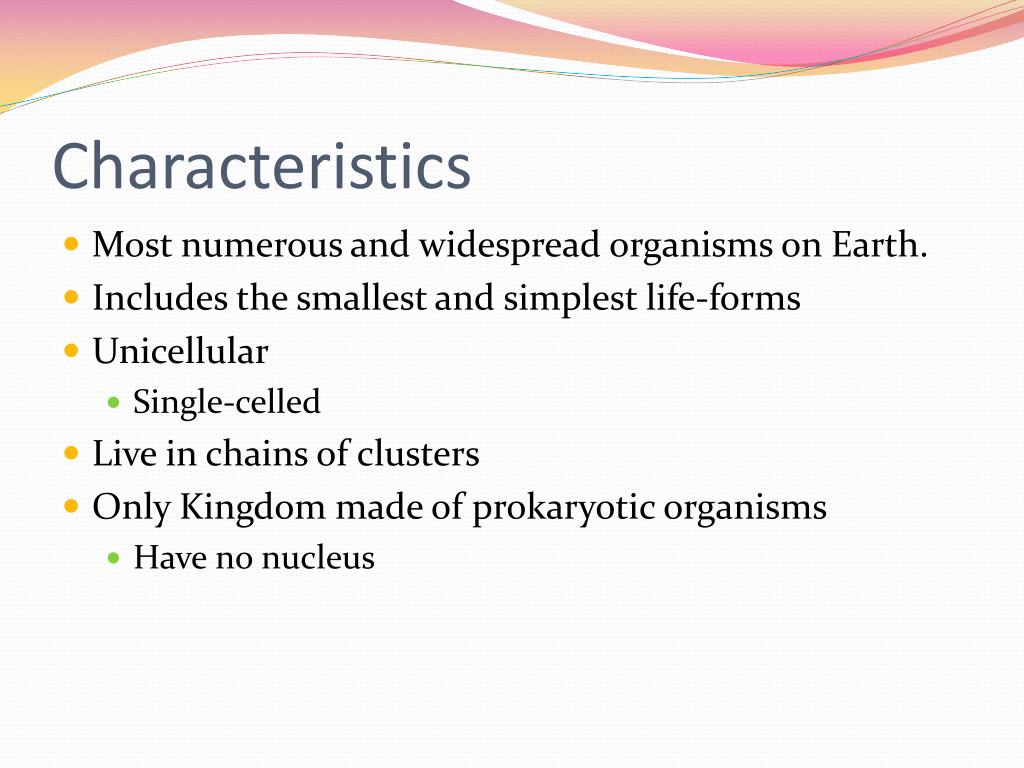
Kingdom Monera Definition, Classification, Characteristics, Examples
Kingdom Fungi- Characteristics. These are heterotrophic multicellular or unicellular eukaryotes. Cell walls are made of chitin. Thread-like slender filaments are known as hyphae which are divided by partitions called septa in the cells. The network formed by a group of hyphae is known as the mycelium.
(2)CBSE Class 11 Biology, Biological Classification 2, kingdom Monera
Characteristics of Monera . The characteristics of the organisms belonging to this kingdom include: - The Monerans are unicellular organisms. The cell wall is rigid and made up of peptidoglycan. Asexual Reproduction through binary fission. They contain 70S ribosomes. Flagella serves as the locomotory organ.

PPT Kingdom Monera PowerPoint Presentation, free download ID2460688
Characteristics and Classification of Monera. Monera has a place with the prokaryote family. The life forms having a place in this realm don't contain a genuine core. These are the most established known microorganisms on the planet. Their DNA isn't encased inside the core. Bacteria are the sole individuals from the Kingdom of Monera.

Kingdom monera characteristics
Characteristics of Monera Monera (Monos - single) includes prokaryotes and shows the following characters: They are typically unicellular organisms (but one group is mycelial). The genetic material in these organisms is the naked circular DNA. A nuclear envelope is absent.

Kingdom Monera Bacteria Biological Classification Class 11 NCERT
Characteristics of Kingdom Monera The important characteristics of Monera are mentioned below: The Monerans are unicellular organisms. They contain 70S ribosomes. The DNA is naked and is not bound by a nuclear membrane. It lacks organelles like mitochondria, lysosomes, plastids, Golgi bodies, endoplasmic reticulum, centrosome, etc.

Biological Classification Lec 3 Kingdom Monera Class 11 NEET
The important characteristics of Monera are mentioned below: The Monerans are unicellular organisms. They contain 70S ribosomes. The DNA is naked and is not bound by a nuclear membrane. It lacks organelles like mitochondria, lysosomes, plastids, Golgi bodies, endoplasmic reticulum, centrosome, etc.

Kingdom Monera
Monera, derived from the Greek term "μονήρης" (monḗrēs), signifying "single" or "solitary," historically represents a biological kingdom encompassing prokaryotes. These organisms are characterized by their unicellular nature and the absence of a distinct nucleus. The taxonomic classification of Monera has undergone.

Class 11th Biological Classification, Characteristics of Kingdom Monera
Monera (/məˈnɪərə/) (Greek: μονήρης (monḗrēs), "single", "solitary") is historically a biological kingdom that is made up of prokaryotes.As such, it is composed of single-celled organisms that lack a nucleus.It has been superseded by the three-domain system.. The taxon Monera was first proposed as a phylum by Ernst Haeckel in 1866. . Subsequently, the phylum was elevated to the.

Kingdom monera characteristics
Introduction What Is The Kingdom Monera? Different Shapes Of Bacteria Introduction We all have heard about bacteria but do you know that it belongs to Kingdom Monera? Bacteria are microscopic organisms that can survive in multiple environments. These can be beneficial and harmful at the same time.

Exploring The Autotrophic And Heterotrophic Nature Of Organisms In The
Following are some of the characteristics of the kingdom Monera; The monerans are single-celled creatures. They have 70S ribosomes in them. The nuclear membrane does not enclose the DNA, which is exposed in the form of a nucleoid. Monera is devoid of cellular organelles like lysosomes, plastids, centrioles, Golgi bodies, mitochondria, and so on.

NCERT biology class 11 Kingdom monera CBSE class 11 YouTube
17,100. R.H. Whittaker proposed the five-kingdom classification in 1969. This classification was based upon certain characters like mode of nutrition, thallus organization, cell structure, phylogenetic relationships and reproduction. This form of kingdom classification includes five kingdoms Monera, Protista, Fungi, Plantae and Animalia.

CLASS 11 Biological Classification Kingdom Monera PART 6 YouTube
Bio 11._1_1. Participants. General. Adaptation & Evolution. Viruses & Microscopes. Monera & Protista. Kingdoms Monera & Protista NOTES. Characteristics of Life. Taxonomy & Characteristics of Kingdom Monera. Kingdom Monera Guided notes. Kingdom Protista Characteristics. Table Phylum Characteristics K. Protista. Plant-like Protists Phytoplankton.

Kingdom Monera Classification, Characteristics, Microscopy Methods
The following characteristics will help you get a better understanding of the kingdom of classification. Monera are about 1 micrometer in size and complex as living molecules. The Monera cell structure is mostly unicellular and some organisms orm groups or filaments. These organisms are the simplest prokaryotic cell structures.

Kingdom monera Keywords kingdom monera images, kingdom monera examples
Classification of Kingdom Monera. The kingdom Monera is a member of the prokaryote family. There is no genuine nucleus in any of the species that are members of this kingdom. These are the earliest known microbes on the planet, dating back millions of years. The DNA of these organisms is not contained within the nucleus. Table of Content.

Biological Classification Kingdom Monera NEET Biology Class 11th
The general features of Monerans are: Monerans are present in both aerobic and anaerobic environment. Some have rigid cell walls, while some do not. The membrane-bound nucleus is absent in monerans.

Biological classification Monera Kingdom general characteristics
Monera is the most ancient group of organisms on earth, as well as the most numerous. In this kingdom, the organisms have naked DNA that forms a clump called the nucleoid, as shown below, while organisms in all other kingdoms have DNA enclosed in a nucleus. Since monerans are prokaryotes, such as bacteria, they have no membrane-bound organelles.